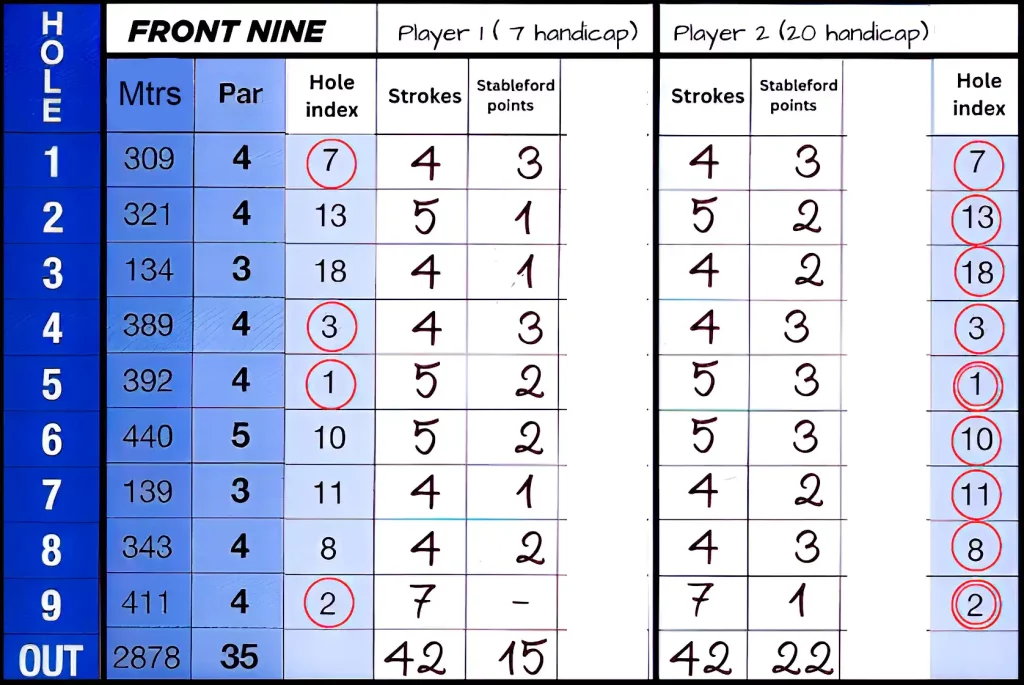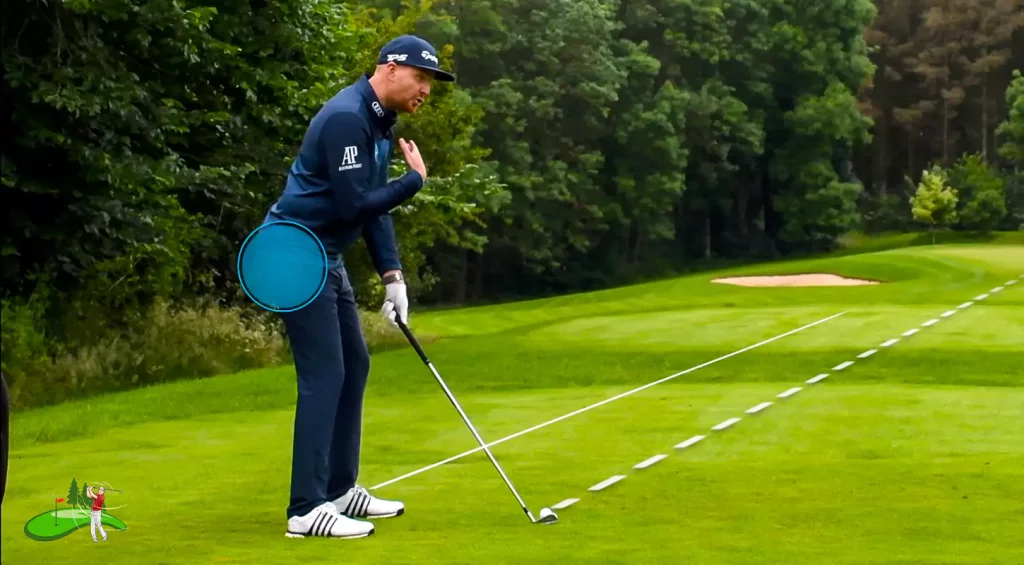Scoring in Golf
Golf is not just a popular sport, millions of people play it worldwide. This sport requires skill, concentration, patience, and learning. There are a lot of Golf Scoring terms like mulligan, chipping, and scramble that can confuse beginners. One of the key aspects of golf is scoring. Many beginners struggle to find the right guide to golf scoring. Scoring in Golf is a complex and multi-faceted aspect of the game. It requires a good understanding of the rules and there are different types of scoring systems in golf.
While many won’t know how the Scoring in Golf works, we will take a closer look at it. It will include the different scoring systems used in golf and the role of the handicap system. We will also share some tips on how to improve your golf scoring.

Golf Scoring for Beginners
Firstly, There are several different scoring systems, depending on the format of the game and the rules of the course. First, we will discuss the two most common scoring systems used in golf, stroke play, and match play for your better understanding of the game. And as a beginner, it will be easier for you to understand them first! And, if you’re a pro you might be aware of it, but we will give you a better understanding of the concept.
Stroke Play
Stroke play is the most common scoring system used in golf. In stroke play, the golfer’s score is determined by the total number of strokes they take to complete the round. The golfer with the lowest number of strokes at the end of the round is the winner.
In stroke play, each hole has a par, which is the number of strokes that an expert golfer is expected to take to complete the hole. For example, a par 3 hole is one where an expert golfer will take three strokes to complete the hole. A birdie occurs If a golfer completes a par 3 hole in two strokes, If they complete it in one stroke, they have made a hole-in-one.
Match Play
Matchplay is another common scoring system used in golf.
In match play, two golfers compete against each other, with the golfer who wins the most holes being the winner of the match. For Each hole, you have to play as a separate competition, with the golfer who takes the fewest strokes on a hole winning that hole.
If the golfers take the same number of strokes on a hole, the hole is considered halved, and no points are awarded.
Stableford

Stableford is a scoring system in golf that has been used for the past 100 years. In Stableford, scoring system points are awarded for the number of strokes taken on each hole about par. Unlike in stroke play, where you want to have the lowest score, your goal in the Stableford scoring system will be to have the highest score possible.
Standard Stableford points values:
- Double Bogey (Two or more strokes over par) – 0 Points
- Bogey in golf(One stroke over par) – 1 Point.
- Par scoring in golf – 2 Point
- Birdie (One stroke under par) – 3 Points
- Eagle (Two strokes under par) – 4 Points
- Albatross/Double Eagle (Three strokes under par) – 5 Points
- Condor (Four strokes under par) – 6 Points
While the above scoring system shows the typically used Stableford points values, the point values can also be whatever a group of Players or tournament organizers decide. Scoring with adjusted point values is called Modified Stableford.

The Role of the Handicap System
The golf scoring handicap system is a way of leveling the playing field between golfers of different abilities. It is a system that allows golfers to adjust their scores based on their level of skill, to make the game more competitive and enjoyable for all.
To calculate a golfer’s handicap, a series of scores from previous rounds of golf are considered. The golfer’s handicap is then calculated based on their average score over these rounds, with adjustments made for the difficulty of the course they are playing on.
When playing against golfers with different handicaps, the golfer with the higher handicap gets extra strokes to compensate for their lower skill level. For example, if a golfer with a handicap of 20 is playing against a golfer with a handicap of 10, the golfer with the 20 handicap will get ten extra strokes over the course of the round.
Overall Golf scoring rules explained
Scoring is typically based on stroke play, in which every shot counts one stroke each. A golfer’s score is usually in terms of the number of strokes under, even with, or over the par score.

For example, A golfer who shoots a score of 65 on a par-72 course is seven under par or minus seven. A golfer who shoots an 80 is eight over par or plus-eight. A golfer who scores a 72, par for the course, is even. It is better to be under par than over par, but the score can be relative to your level of competition or your personal set goals. The following are the most recognized golf scoring terms:
Par scoring in Golf
The par score is when a player completes a hole in the exact number of strokes listed on the course scorecard. Each hole has a par, which is the number of strokes that an expert golfer is expected to take to complete the hole.
For example, par-4 holes require a player to finish it in four shots to attain par. Par-3 holes are usually shorter holes on which players can hit the tee shot onto the green. On the contrary, a par-5 hole might require three to four shots to reach the hole.
Distance is the main determining factor in a hole’s par rating. The distance can vary for men and women. So, here are the United State Golfer Association’s distance guidelines for men and women:

Scoring For men in Golf:
- Par-3 – Up to 250 yards
- Par-4 – 251 to 470 yards
- Par-5 – 401 to 690 yards
Scoring For women in Golf:
- Par-3 – Up to 210 yards
- Par-4 – 211 to 400 yards
- Par-5 – 401 to 575 yards
Birdie
Birdies are the most achievable scores on any hole. A birdie is a score one stroke less than par, often made on par-4 and par-5 holes. While on a par-3 hole, it’s harder to score a birdie because it requires the golfer to get the ball into the hole in two shots.
Eagle
Eagle is a score that a golfer completes a hole in two fewer shots than par. Eagles usually occur on par-4 or par-5 holes.

Double Eagle
A double eagle or an albatross is when a player completes a par-5 hole in two shots (three under par). For Example, to achieve a double eagle golfer would have to drive the ball from the tee on the first shot and on the second shot hit the ball into the hole. An albatross is a very rare achievement in golf.
Bogey scoring in Golf
The scoring term bogey expresses a score of one shot over par. Thus, a score of two shots over-par is a double bogey, three over par is a triple bogey, and four over-par is a quadruple bogey.
Penalty strokes:
Penalty strokes are added to a player’s score for various reasons, such as hitting the ball out of bounds, taking an unplayable lie, or hitting into a water hazard. These strokes are adds up to the player’s score and count toward their total score for the round.
For example, if a player hits their tee shot out of bounds and has to take a penalty stroke, their score for that hole would be the number of strokes they took to get the ball in the hole plus one penalty stroke. Penalty strokes occur for various rules infractions, such as grounding the club in a bunker. In some cases, players can also be penalized for slow play or other violations of etiquette.
It’s important for golfers to understand the rules of the game and how penalty strokes take place in order to keep the score accurate and avoid unnecessary penalties.

Tips for Improving Your Golf Scoring
Everyone wants to decrease their golf scores but that requires a combination of skill, practice, strategy, and of course some tips:
- Practice, practice, practice: The more you practice, the better you will get. Spend time practicing your swing, your short game, and you’re putting.
- Focus on your short game: The short game is the most important part of golf scoring. Spend time practicing your chipping, pitching, and putting.
- Develop a pre-shot routine: A pre-shot routine can help you stay focused and calm on the course, which can help improve your golf scoring.
- Learn to manage your emotions: Golf can be a frustrating game, and it is easy to get angry or upset when things don’t go your way.
You can know more about us and get in touch for more amazing updates in Golf World and for professional reviews.







